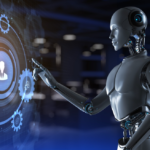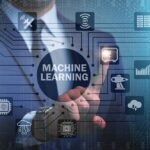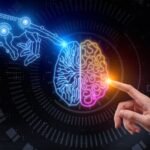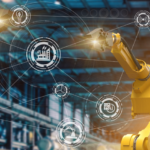Artificial Intelligence in Autonomous Vehicles
Autonomous vehicles, once a distant dream, are now becoming a reality, thanks to advancements in artificial intelligence (AI) technologies. AI plays a pivotal role in enabling self-driving cars to perceive the environment, make informed decisions, and navigate safely on the roads. From computer vision and sensor fusion to deep learning and predictive modeling, AI algorithms are transforming transportation by revolutionizing the way vehicles operate. With the potential to enhance safety, efficiency, and accessibility, AI in autonomous vehicles is reshaping the future of transportation.
- Perception and Sensor Fusion: Seeing and Understanding the World
AI algorithms in autonomous vehicles utilize computer vision and sensor fusion techniques to perceive and understand the surrounding environment. Cameras, lidar, radar, and other sensors collect a wealth of data about the road, objects, pedestrians, and other vehicles. AI algorithms process this data, enabling the vehicle to recognize and classify objects, interpret traffic signs, and understand complex road scenarios. By accurately perceiving the environment, autonomous vehicles can make informed decisions and navigate safely.
- Decision-Making and Path Planning: Navigating with Intelligence
AI enables autonomous vehicles to make real-time decisions and plan optimal paths based on the perceived environment. Deep learning algorithms and predictive models analyze the sensor data, traffic conditions, and historical patterns to anticipate and respond to various scenarios. These algorithms can calculate safe and efficient routes, adjust speeds, and make decisions in complex traffic situations. AI empowers autonomous vehicles to navigate smoothly, adapt to changing conditions, and ensure passenger safety.
- Predictive Maintenance and System Optimization
AI plays a crucial role in maintaining the health and performance of autonomous vehicles. By analyzing data from various vehicle sensors, AI algorithms can predict and detect potential issues before they become critical. This allows for proactive maintenance, minimizing downtime and ensuring the vehicles are in optimal condition. Additionally, AI-driven optimization techniques can enhance energy efficiency, vehicle routing, and traffic management, leading to reduced fuel consumption and improved overall system performance.
- Enhanced Safety and Accident Prevention
One of the primary goals of autonomous vehicles is to improve road safety. AI technologies contribute significantly to achieving this objective. AI algorithms can react faster than humans, analyze vast amounts of data in real-time, and make split-second decisions to prevent accidents. By leveraging machine learning, autonomous vehicles can learn from past driving experiences and continuously improve their performance. The potential of AI to detect and respond to potential hazards, mitigate risks, and adhere to traffic rules has the potential to significantly reduce accidents on the road.
- Accessibility and Mobility Solutions
AI-powered autonomous vehicles have the potential to transform mobility and provide transportation solutions for individuals who face mobility challenges. Elderly individuals, people with disabilities, and those without access to private transportation can benefit from autonomous vehicles that are designed for accessibility. AI algorithms can assist with navigation, boarding, and disembarking, ensuring a seamless experience for passengers with diverse needs. By enhancing accessibility, autonomous vehicles have the potential to improve the quality of life for many individuals and increase inclusivity in transportation.


































